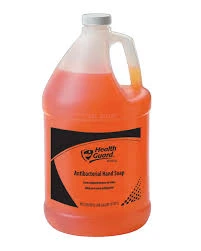flocculant chemicals for water treatment
Flocculant Chemicals for Water Treatment
Water treatment is an essential process in both industrial and municipal systems, aimed at removing impurities and ensuring the water is safe for consumption, agricultural use, and industrial applications. Among the numerous chemicals employed in the water treatment process, flocculants have emerged as vital agents that enhance the efficiency of water purification methods.
Flocculants are chemical substances that facilitate the agglomeration of suspended particles into larger aggregates, or flocs, which can then be easily separated from the water. This process is crucial in various stages of water treatment, particularly in sedimentation and filtration. The effectiveness of flocculants lies in their ability to alter the surface properties of particles, encouraging them to clump together and settle out of the water column.
There are different types of flocculants available, each suited for specific applications. The most common types include organic polymers, inorganic coagulants, and natural flocculants. Organic flocculants are often synthetic polymers, such as polyacrylamide, which can be tailored to meet specific requirements in terms of charge density and molecular weight. These polymers are particularly effective in treating wastewater and are favored for their ability to work in low concentrations and with a wide range of pH levels.
Inorganic coagulants, such as aluminum sulfate (alum) and ferric chloride, are also widely used. These substances work by neutralizing the charges on suspended particles, allowing them to come together and form larger aggregates. While effective, inorganic coagulants can sometimes add unwanted impurities to the treated water and may require careful management to mitigate side effects, such as residual metal ions.
Natural flocculants derived from plant and animal materials, such as alginates and chitosan, are gaining attention for their eco-friendly properties. These biodegradable agents not only assist in sedimentation but also pose less risk to the environment compared to their synthetic counterparts. Their use is particularly promising in developing countries and rural areas where resources for water treatment may be limited.
flocculant chemicals for water treatment

The choice of flocculant depends on several factors, including the type of impurities present in the water, the desired treatment outcome, and economic considerations. The effectiveness of flocculants can be influenced by factors such as dosage, mixing conditions, and the characteristics of the water being treated. Therefore, it is crucial to conduct jar tests and pilot studies to determine the optimal flocculant type and concentration that will yield the best results.
One of the significant benefits of using flocculants in water treatment is the efficiency they bring to the process. By promoting the rapid agglomeration of particles, flocculants reduce the time required for sedimentation and filtration, leading to increased throughput in water treatment facilities. This efficiency is particularly important in industrial applications, where large volumes of water need to be treated quickly and effectively.
Moreover, flocculants can help improve the overall quality of the treated water. By removing turbidity and other contaminants, they contribute to producing clearer, cleaner water which is essential for public health and environmental protection. The removal of suspended solids not only enhances aesthetic qualities but also reduces the load on downstream treatment processes, thereby improving system performance and lowering operational costs.
Despite their benefits, the use of flocculants must be managed carefully to avoid potential drawbacks. Overdosing can lead to inefficient treatment, resulting in higher costs and unnecessary chemical use. Additionally, the residual flocculant must be adequately managed to prevent it from re-entering the environment, which necessitates proper disposal methods or further treatment processes.
In conclusion, flocculant chemicals play a pivotal role in modern water treatment processes. Their ability to enhance sedimentation and filtration efficiencies not only facilitates the production of safe and clean water but also supports sustainable practices in water management. As the demand for clean water continues to rise, the innovation and application of various flocculant types will remain a key focus area for researchers and water treatment professionals alike, ensuring effective solutions for current and future water quality challenges.
-
lk-319-special-scale-and-corrosion-inhibitor-for-steel-plants-advanced-solutions-for-industrial-water-systemsNewsAug.22,2025
-
flocculant-water-treatment-essential-chemical-solutions-for-purification-processesNewsAug.22,2025
-
isothiazolinones-versatile-microbial-control-agents-for-industrial-and-consumer-applicationsNewsAug.22,2025
-
scale-inhibitor-key-solutions-for-water-system-scale-preventionNewsAug.22,2025
-
organophosphonates-versatile-scale-inhibitors-for-industrial-water-systemsNewsAug.22,2025
-
scale-and-corrosion-inhibitor-essential-chemical-solutions-for-water-system-maintenanceNewsAug.22,2025





